

In this month's Morbidly Fascinating Page:
19th Century Vampire Slaying Kit
IN THE ARCHIVES:
Willows Weep
Dangerous Selfies
The Spanish Flu
Bog Bodies
Google Maps
Preserved
A "vampire-slaying kit" containing a pocket-sized pistol and a 19th century copy of the New Testament was found
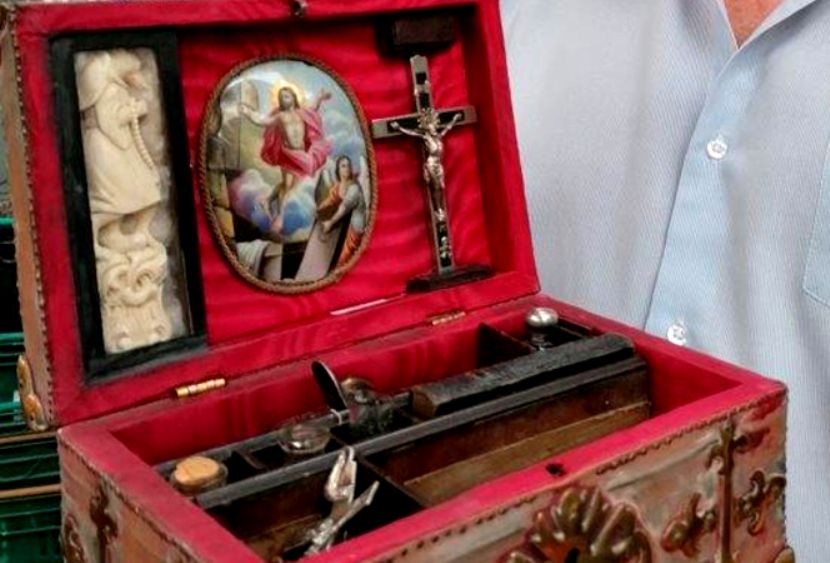
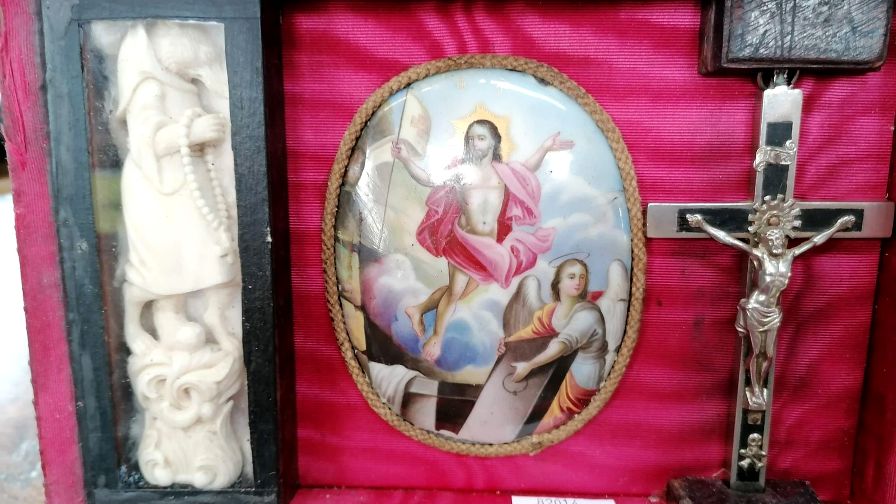
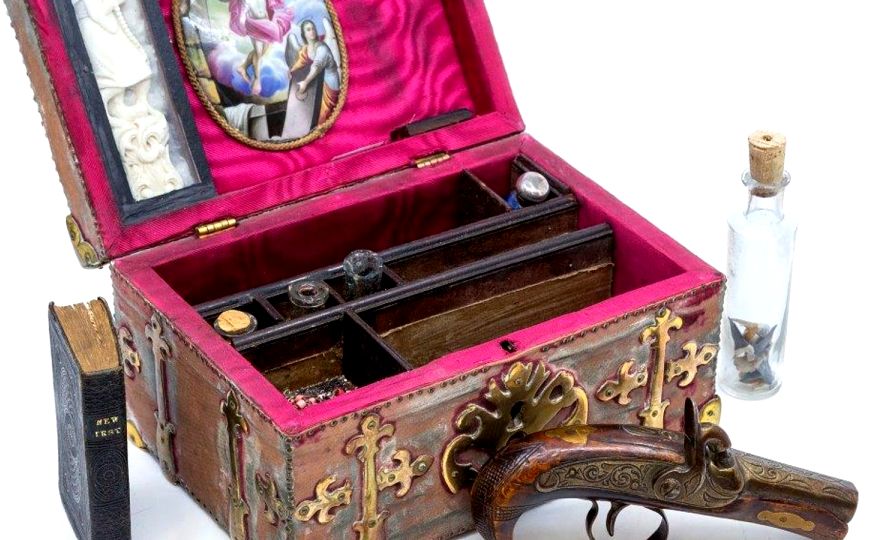
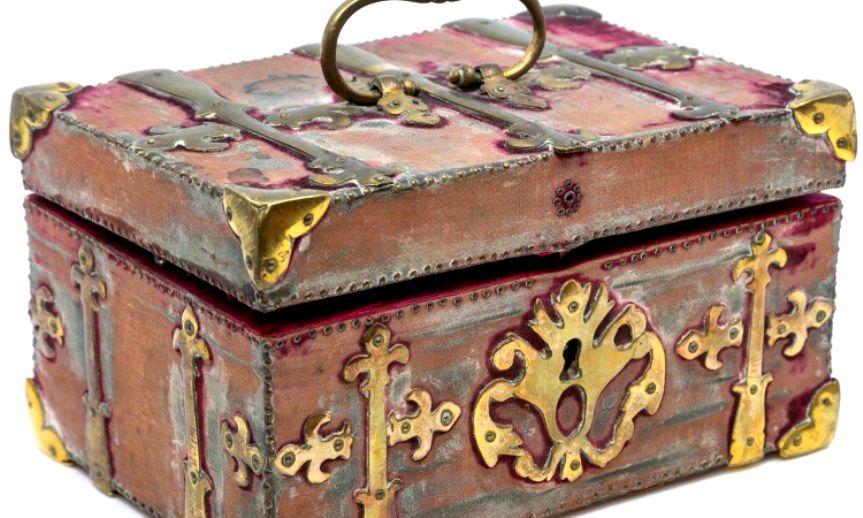
1800s VAMPIRE SLAYING KIT
From Sky News
The gothic-looking container, worth between $2,600 and $3,900, also comes packed with pliers, rosary and a bottle of shark's teeth.
Also inside the metal-bound box is an ivory-robed wolf carrying rosary beads, as well as a blue phial with mysterious contents and a silver-bladed pocket knife.
And inside the lid is an oval enamel painting that depicts the resurrection of Jesus Christ.
There's no record of the box's origin, but the 1842 copy of the New Testament within does bear the inscription of an Isabella Swarbrick.
The current owner from the West Midlands, who wishes to remain anonymous, said that they do not know very much about its history.
"I bought it from a large antiques fair in Newark-on-Trent.
"I loved the look of the Gothic box and, when I opened it, I just had to have it. I thought it was so interesting - a great conversation piece."
Charles Hanson, owner of the Derbyshire-based Hansons Auctioneers, the firm selling the box, said: "People are fascinated by stories of vampires, hence their continued appearance in films and on TV today.
"They have been part of popular culture for more than 200 years.
"The publication of John Polidori's The Vampyre in 1819 had a major impact and that was followed by Bram Stoker's 1897 classic Dracula."
He added: "However, a belief in vampires and strange superstitions goes back even further and persists to this day.
"The task of killing a vampire was extremely serious and historical accounts suggested the need for particular methods and tools.
"Items of religious significance, such as crucifixes and Bibles, were said to repel these monsters, hence their strong presence in the kit we have found."
ARE VAMPIRE KITS REALLY ANTIQUE?
Caveat emptor, indeed. If you want to bid on a “19th century” vampire killing kit, always ask the dealer how they’ve verified the kit’s age. Ask for supporting documentation. If you see one of these things displayed in a museum, ask similar questions. Though it’s counter-intuitive, don’t presume “19th century” means the kit was manufactured during that era.
See the article HERE
HISTORY OF VAMPIRES
Vampire superstition thrived in the Middle Ages, especially as the plague decimated entire towns. The disease often left behind bleeding mouth lesions on its victims, which to the uneducated was a sure sign of vampirism.
It wasn’t uncommon for anyone with an unfamiliar physical or emotional illness to be labeled a vampire. Many researchers have pointed to porphyria, a blood disorder that can cause severe blisters on skin that’s exposed to sunlight, as a disease that may have been linked to the vampire legend.
Some symptoms of porphyria can be temporarily relieved by ingesting blood. Other diseases blamed for promoting the vampire myth include rabies or goiter.
When a suspected vampire died, their bodies were often disinterred to search for signs of vampirism. In some cases, a stake was thrust through the corpse’s heart to make sure they stayed dead. Other accounts describe the decapitation and burning of the corpses of suspected vampires well into the nineteenth century.
See the article HERE
WHO WAS MERCY BROWN?
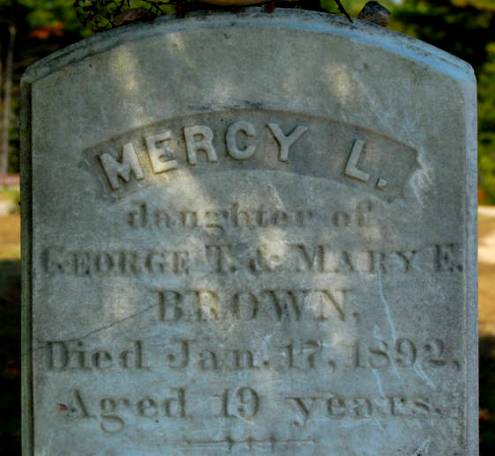
It all started when a farmer named George Brown lost his wife, Mary Eliza, to tuberculosis in 1884. Two years after the death of his wife, his oldest daughter died of the same illness.
Before long, tragedy would strike the Brown family again. As the family members died one by one, people began to suspect that the reason was something far more sinister than a disease.
The rest of George Brown’s family appeared to be in good health until his son, Edwin, became seriously ill in 1891. He retreated to Colorado Springs in the hopes that he would recover in the better climate. However, he returned to Exeter in 1892 in an even worse state.
Within the same year, Edwin’s sister, Mercy Lena Brown, died from tuberculosis when she was just 19 years old. And with Edwin deteriorating rapidly, his father began to grow increasingly desperate.
Meanwhile, several concerned townspeople kept telling George Brown about an old folk tale. The superstition claims that “…by some unexplained and unreasonable way in some part of the deceased relative’s body live flesh and blood might be found, which is supposed to feed on the living who are in feeble health.”
Basically, the myth claims that when members of the same family waste away from consumption, it might be because one of the deceased is draining the life force from their living relatives.
Indeed, on the morning of March 17, 1892, a doctor and some locals exhumed the bodies of each family member who had died of tuberculosis. They found skeletons in the graves of Brown’s wife and eldest daughter.
However, the doctor found that the nine-week-old remains of Mercy Brown looked startlingly normal and un-decayed. Furthermore, blood was found in Mercy Brown’s heart and liver. This seemed to confirm the local fears that Mercy Brown was some kind of vampire who had been sucking the life from her living relatives.
The doctor tried to explain to the townspeople that Mercy Brown’s preserved state was not unusual. After all, she’d been buried during the cold winter months. Nevertheless, superstitious locals insisted on removing both her heart and liver and burning them before reburying her.
The ashes were then mixed with water and fed to Edwin. Unfortunately, this supernatural concoction did not cure him as people had hoped. Edwin died a mere two months later.
See more HERE